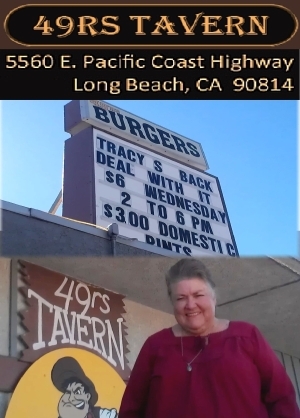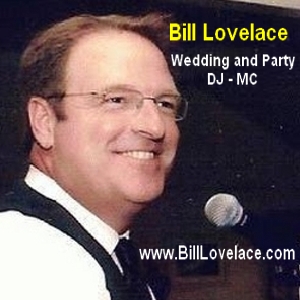|
710 Expansion Planners Advise NOT Advancing Draft Enviro Impact Report As It Stands, Recommend Recirculating Sections -- Including Zero-Emission Aspects -- With New Assumptions, Refinements And...
|

 |
|
710 Expansion Planners Advise NOT Advancing Draft Enviro Impact Report As It Stands, Recommend Recirculating Sections -- Including Zero-Emission Aspects -- With New Assumptions, Refinements And...
|

 |
| (Jan. 30, 2013, 1:00 p.m., updated Feb. 3) -- LBREPORT.com has learned that a key Committee guiding plans to expand ("modernize") the I-710 freeway is now recommending that the draft Environmental Impact Report released on the project by Caltrans last summer -- which sparked questions and criticism from grassroots activists as well as Long Beach City Hall -- NOT be advanced for final certification as it stands.
In a draft memo obtained by LBREPORT.com, the I-710 Project Team (names not indicated in memo) says its Technical Advisory Committee voted (on Jan. 16) to recommend issuing a Recirculated Draft EIR/Supplemental EIS (RDEIR/SDEIS) that will focus on three I-710 alternatives -- two of which include a zero emission freight corridor and include different assumptions. "The focused RDEIS/RSEIS would update the technical analyses and the draft environmental document for one or two candidate preferred alternatives along with a No Build alternative," the memo states, citing changes in the project since 2008, new data and concerns expressed in comments received to the draft EIR/EIS. The recommendation to Recirculate portions of the draft EIR/EIS is contained in an undated draft memo from the "Project Team" to the I-710 Corridor Project EIR/EIS Committee...which is scheduled to meet on Thursday, Jan. 31. The memo indicates that on Jan. 16, the I-710 Technical Advisory Committee approved recommending to MTA's Board of Directors and Caltrans that a Recirculated Draft EIR/Supplemental EIR (RDEIR/SDEIS) be developed using a new set of assumptions and [memo text] "will refine and analyze" the following alternatives as generally outlined in the memo:
"The recommendation is to proceed with the Recirculated Draft EIR/Supplemental Draft EIS (RDEIR/SDEIS) which analyzes a revised No Build and two build alternatives and then proceed with a final EIR/EIS for a preferred alternative after the circulation of the RDEIR/SDEIS for public and agency review and comment," the memo says. UPDATE: The memo as presented to the Gateway Council of Governments' I-710 EIR/EIS Project Committee at its Jan. 31 meeting is visible in full at pp. 36-44 at this link. Under this revised process, a recirculated version of the draft EIR/EIS will be prepared, released and public comments will be received and responses prepared. Only then will the document be advanced to the MTA Board for its choice of a project alternative. The reciculation process is currently expected to add roughly 12-18 months to the timeline, I-710 project consultant Jerry Wood told the Long Beach City Council's I-710 Oversight Committee (Councilmembers Al Austin (chair), James Johnson & Steve Neal) at its meeting on Tuesday Jan. 29. In addition -- in a disclosure potentially affecting the width of I-710 expansion in Long Beach and possibly some areas to the north -- Mr. Wood told the LB Council's I-710 Oversight Committee that only eight general purpose lanes -- not ten -- would be needed in Long Beach south of the 405 under a new set of assumptions that might include analysis of two proposed container transfer railyards (BNSF's SCIG and UP's ICTF, pending proposals that have drawn opposition from neighborhood groups). [The initial I-710 draft EIR/EIS didn't assume/didn't analyze the effects on 710 truck traffic if the two rail facilities were built.] Mr. Wood: We don't know right now, until the modeling is redone with a new set of assumptions -- that's why it says "up to 10 general purpose lanes" -- we don't know now with this new set of assumptions which might include a sensitivity analysis of the SCIG and ICTF go forward -- whether we need 10 general purpose lanes. I will tell you at the south end of the project, south of 405, we don't need 10 general purpose lanes, especially with this new set of assumptions. As you go further north you accumulate traffic, and the TAC was fairly comfortable with 8 general purpose lanes south of the 105. North of the 105, we're not sure. You just start building up as you go north. Long Beach Council Committee chair/Councilman Al Austin said after hearing Mr. Wood's report: "I am encouraged by the fact that we are recirculating this draft EIR. It's something that we as a city requested in our comment letter dated Sept. 28 [2012], so that is I guess a small victory for our city as many of the concerns that we had weren't addressed in the original draft EIR, but I think many of your recommendations are going to move us in the right direction." Committee member Councilman James Johnson noted that the project has changed over the years and said "the number one purpose of this project is to improve air quality and I can tell you on behalf of the City of Long Beach I will not be support of anything that doesn't improve air quality and I'm very pleased that we have been moving forward with the zero emissions lanes that will get that job done." Councilman Johnson said that a second purpose of the project is safety and every year that the 710 isn't modernized, "people are getting killed on this freeway, and we know that. We know that these people are more likely to be low income...to be minority communities because those are the folks that take the 710 freeway. I would say that every year we're not building this freeway, we're not modernizing it, someone is going without a son...without a brother or a sister...those are people dying unnecessarily on this very dangerous freeway, one of the most dangerous in the nation, and we know it's dangerous. And I do think we have an ethical responsibility to mitigate those harms." Regarding zero-emission transportation methods, Councilman Johnson noted that as part of SCAG's Regional Transportation Plan, the City of Long Beach has proposed building a zero-emissions pilot project along the Terminal Island Freeway or Alameda Blvd. Councilman Johnson: ...Wouldn't it be prudent before embarking on a $6 billion, 30 mile plus extension, to invest in a pilot project, and wouldn't it be best to do that pilot project right here next to the Port where we have the greatest impacts?...It seems to me if we could spend $40 million, work out the engineering kinks today, figure out the challenges while we're in the EIR, reduce the total costs so that we can bring the ultimate solution I'd have to say of moving goods and people without ruining quality of life?. Wouldn't that make some sense? And finally on that note: wouldn't it make sense to use some of this early action money to invest in that project, get this thing going while we continue the multi-year process of the project? Mr. Wood replied: "I agree with you" and added that Councilman Johnson could recommend to the 710 Project Committee and the TAC to use some early-action money to participate in a zero emission demonstration project. Councilman Johnson pressed further: is it a money issue, or a science issue, what's holding this back? Mr. Wood replied: "It's both." He said the engineering for a catenary system for trucks [overhead wires similar to used with a trolley] is tricky, and would also involve commercializing study [to explore the future of building trucks that could use such a catenary system.] Mr. Wood noted that work also has to be done with Edison on delivering the substantial amount of electrical power needed for the system. Mr. Wood suggested that Councilman Johnson could request from the 710 Project Committee on Thursday night (Jan. 31) is to ask MTA as part of their zero emissions truck collaborative come back with a specific proposal, bringing all the agencies together, and come back with a specific proposal to do a demonstration project. "We have all the players at the table," Mr. Wood said..."and see what kind of funding people are willing to bring to it...and then we can move that ball down the field but we need a preliminary design which Siemans is going to work out..." The memo indicates that the recirculated document will include discussion of previous alternatives 5A, 6A and 6B that the DEIR/DEIS analyzed and won't be carried further into the recirculated document (RDEIR/RSEIS)...and the recirculated document will also include comments and responses on the DEIR/DEIS. During the Council Committee meeting, Angelo Logan of the Coalition for Environmental Health and Justice delivered a presentation on their favored "Community Alternative 7" (which includes no 710 widening, a comprehensive public transit element, a committed zero emission freight corridor, a public-private partnership for an employer operated freight system, river improvements, a comprehensive pedestrian and bicycle element, and community benefits including expanded open space and other enhancements). The Council's I-710 Committee voted to encourage the Project Committee to analyze the components of "Alternative 7" that are feasible within the recirculated DEIR. The draft memo indicates the RDEIR/SDEIS will include comments received on the DEIR/DEIS and responses to those comments. The TAC also recommended that the RDEIR/SDEIS be prepared [memo text] "with continuation of the robust I-710 Community and Agency participation framework..." The memo indicates almost 3,000 comments were received with over 300 official comment letters or statements, which are now being analyzed. Developing...with further to follow on LBREPORT.com.
Contact us: mail@LBReport.com |
           Hardwood Floor Specialists Call (562) 422-2800 or (714) 836-7050  |
Contact us: mail@LBReport.com